Squad 51 vs. the Flying Saucers is a side-scrolling shoot ’em up that uses black-and-white live-action cutscenes and crude models to create the aesthetic of a B-grade sci-fi film. It’s a 1950s vision of the near future, and alien visitors have brought rapid technological advancement to Earth by expanding their corporations to its continents. Before long, paid human employees are replaced by prisoner labor created through severe crackdown on minor and imaginary crimes. It soon becomes clear that the aliens, led by the affable and dictatorial Director Zarog, intend to enslave all of humanity. A group of rebels fight back as a small air force called Squad 51. I play as Lieutenant Kaya, portrayed in cutscenes by Kaya Rodrigues, a young and talented pilot who participates in daring raids on alien installations throughout Earth in an effort to free humanity from the invaders.
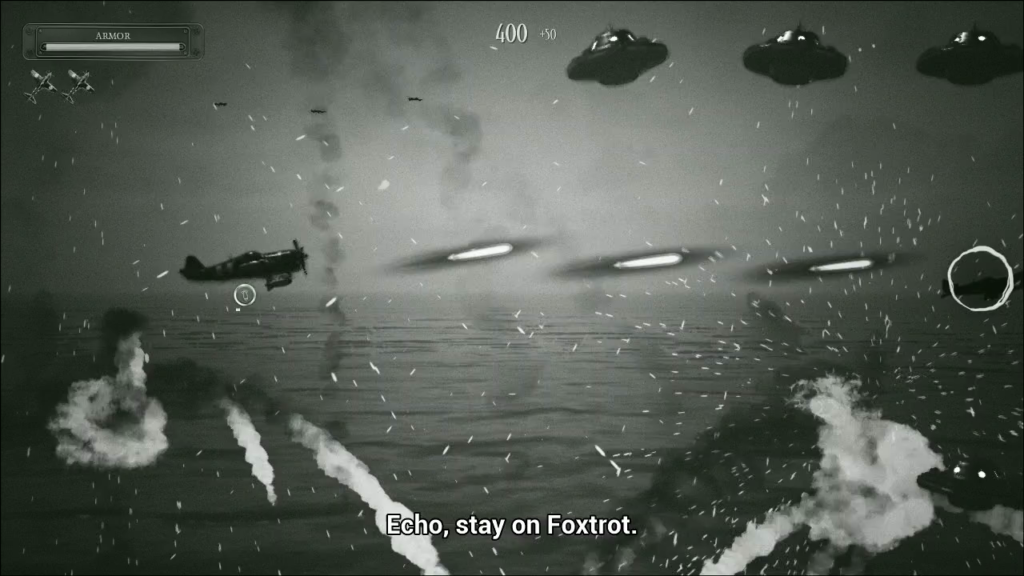
Squad 51 vs. the Flying Saucers’ presentation is the main reason to sit down and play it. Its live-action cutscenes take inspiration from cheesy classics like Killers from Space and Earth vs. the Flying Saucers (from which it evidently borrows its name). It executes its creative vision with such success that it would feel welcome being riffed on Mystery Science Theater 3000.
There’s a sense of studious affection in how these cutscenes are created. The aliens’ headquarters, festooned with innumerable curtains for no decoratively coherent purpose, recalls the curtained backdrops of “airplane cockpits” and “spaceship labs” in the ultra-low-budget Plan 9 from Outer Space. Other sets are spare, making me imagine the actors were placed in front of the nearest available wall to perform their scenes. Costumes are simple and nondescript, as though they were pulled straight from production shops who got piles of cheap surplus military uniforms following the end of World War II.
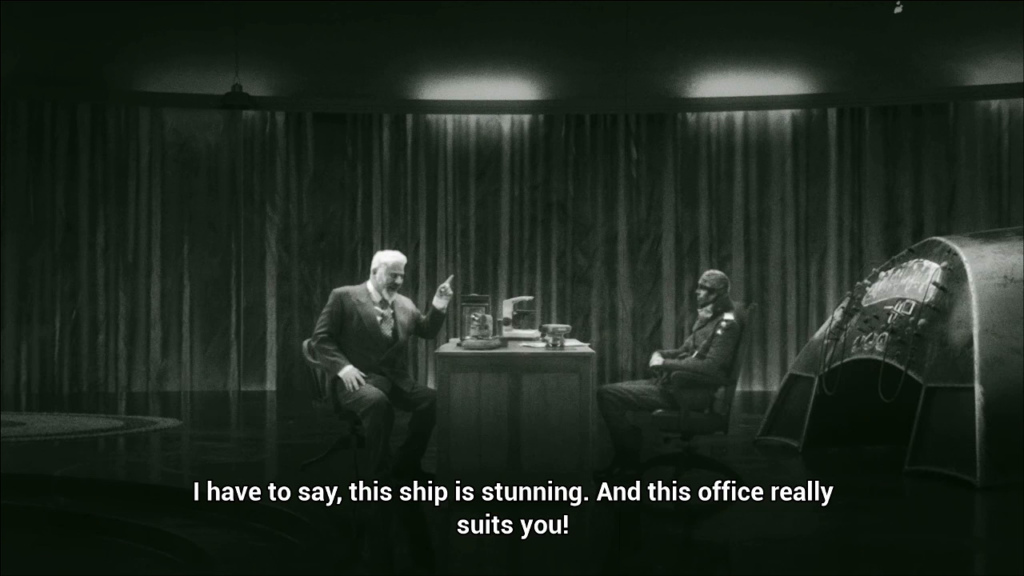
Some of the authentic feel may even be accidental. A largely Brazilian production, Squad 51 vs. the Flying Saucer’s cutscenes were originally filmed in Portugese (and may be watched in this language if the player wishes), then later dubbed into English. The voices not quite matching their actors and dialog not quite syncing with their mouths is reminiscent of many B-movies which were filmed internationally, often in Italy and across the South America continent, and also received dubs of varying quality when they were unleashed on filmgoing audiences in the United States.
The shoot ’em up levels themselves are a paradox, utilizing high-quality images and special effects to create something that looks affectionately fake and cheap.
Squad 51’s planes and the aliens’ flying saucers are clearly toys and miniatures cobbled together from spare parts. Some of the flying saucers are even supported by visible strings. A memorable later level finds the heroes battling giant bipedal lizards and a massive mutated bird. The lizards are obviously men in rubber suits stomping around a scale model of a city, while the bird has the unmistakably stiff and jerky qualities of stop motion animation. In this scenario, Squad 51 becomes the hapless military defenders of a Kaiju film.
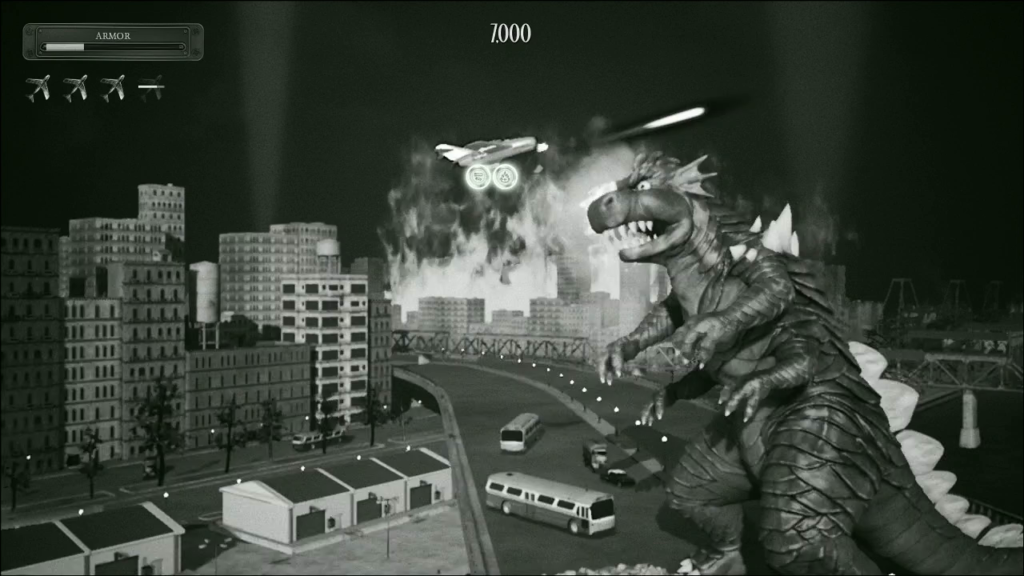
To illustrate the presence of gunfire, blurry white marks fly from Squad 51’s planes and the aliens’ flying saucers, recalling an era when filmmakers would create these effects by marking the film stock itself. The visual language of old film is even adapted for practical videogame design purposes; spots where flying saucers are about to enter the screen are briefly highlighted by white circles that recall the bubbles and burns on cheap, decaying film stock.
With minimally animated aircraft battling each other against fuzzy scrolling backdrops, each level looks exactly like a high definition conversion of a 1950s space war drama. The main difference is these special effect spectacles are stretched out for minutes longer than those filmmakers’ budgets could dare hope for. The result is a collective visual authenticity to the very cheap films that inspire Squad 51 vs. the Flying Saucers. It’s all the more remarkable how successfully it all meshes together into a competent videogame and how well it runs even on modest hardware.
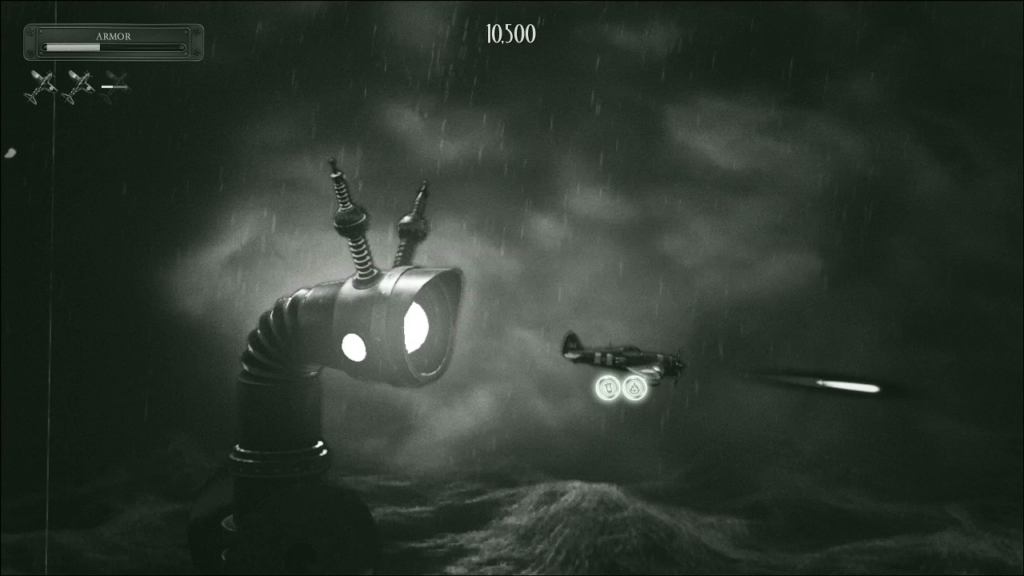
I freely confess that I am not a fan of shoot ’em ups. This is not normally the kind of videogame I would play, let alone review. I have little experience with this genre and even less affection for it, so take whatever I say in the paragraphs below with some skepticism.
As a shoot ’em up videogame, I find Squad 51 vs. the Flying Saucers to be predictable and adequate. It does what shoot ’em ups are expected to do. I play as an airplane on one side of the screen. From the screen’s other side, an armada of enemy ships, tanks, turrets, and other assorted hostiles bombard the player character with projectiles while darting around the screen in intricate patterns. My job is to guide the player character in their plane through the gauntlet while returning fire with their weapons.
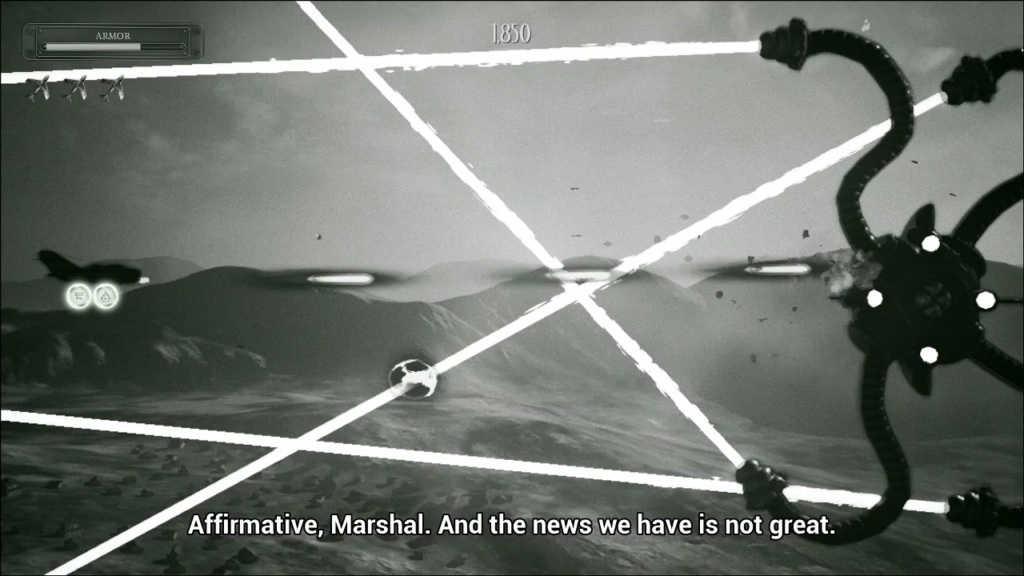
There really isn’t much to say for shoot ’em ups beyond this. They are a genre where satisfaction is found through mastering simple mechanics and often grueling difficulty. Squad 51 vs. the Flying Saucers avoids the familiar Bullet Hell trappings that typify many contemporary shoot ’em ups. It instead relies on set pieces to create interesting scenarios. In different levels I must guide Lieutenant Kaya’s plane into a narrow mineshaft culminating in a boss battle against nearly indestructible mining equipment, through a gigantic alien factory filled with pistons and spinning gears, and a chase through an asteroid cluster that has incongruously found itself in orbit around Earth.
Before I begin a level, I may equip enhancements that change how the player character handles. These enhancements improve the player character by increasing their rate of machine gun fire, improving their resiliency against enemy attacks or collisions with the environment, or adding powerful bomb and flamethrower weapons that must be charged with skillful play before they can be used.
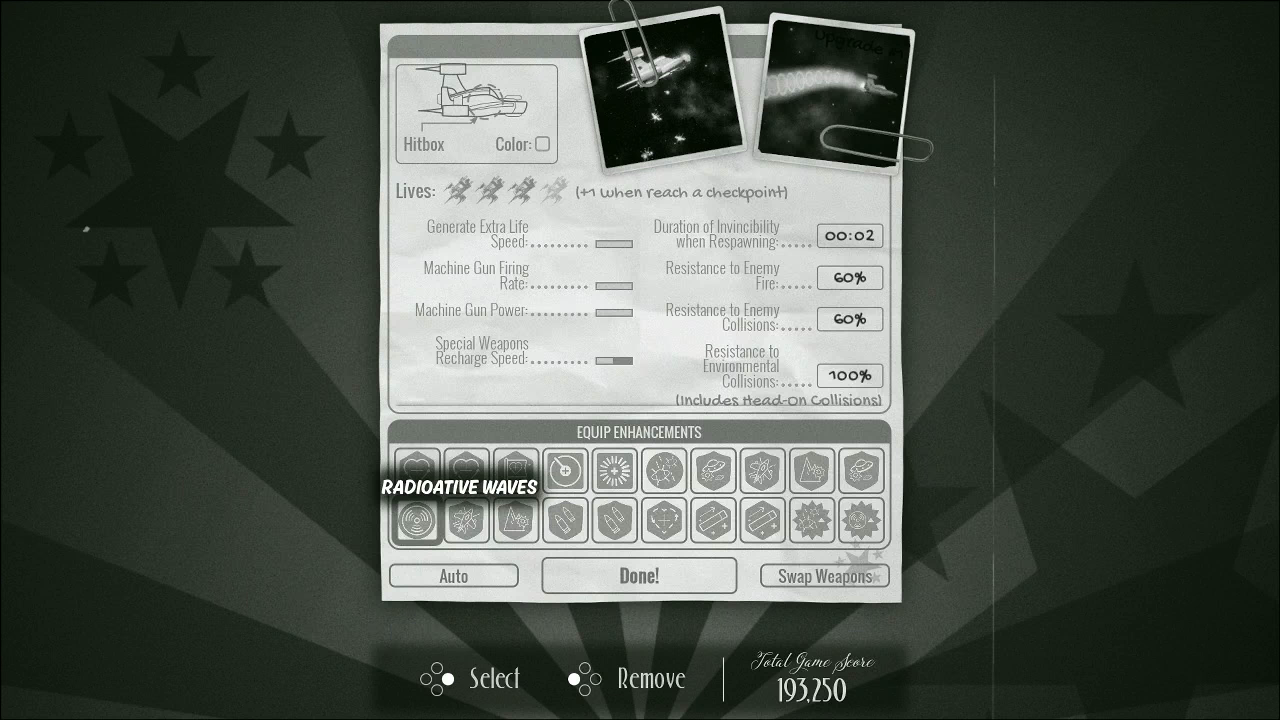
I begin with only a handful of enhancements and three slots in which to equip them, but I earn more of both as my cumulative point total rises. This ensures I still feel like I’m making forward progress even when I lose a level, and it’s a clever way to keep me engaged with the shoot ’em up scoring mechanics which can too often only exist for score chasing purposes that don’t always interest me.
Shoot ’em ups are known for their difficulty, and Squad 51 vs. the Flying Saucers carefully threads a path that keeps it approachable to newcomers without becoming dissatisfying to veterans. Two modes make this possible.
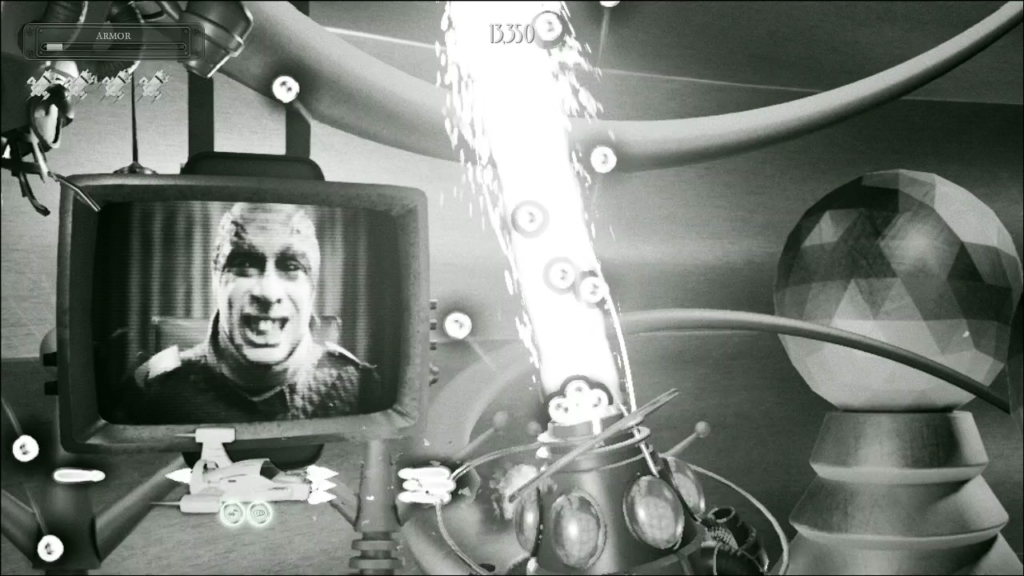
In Normal Mode, each mission may be played individually and signposted by at least one checkpoint. If I run out of lives, I fall back to the last checkpoint, and may continue falling back for as many times as it takes to reach the level’s end. For players more interested in the spectacle than in the challenge, there is even an Infinite Lives toggle in the options menu that ensures the level continues no matter how many times they are shot down.
Resistance Mode is aimed at shoot ’em up purists. There are no continues—a death sends me back to the beginning of the first level—and when Director Zarog is defeated I loop back to the first level with an increased difficulty. I can beat Normal Mode without much frustration in around three hours through copious reliance on checkpoints; I can’t even get past the second level of Resistance Mode, let alone reach the second loop.
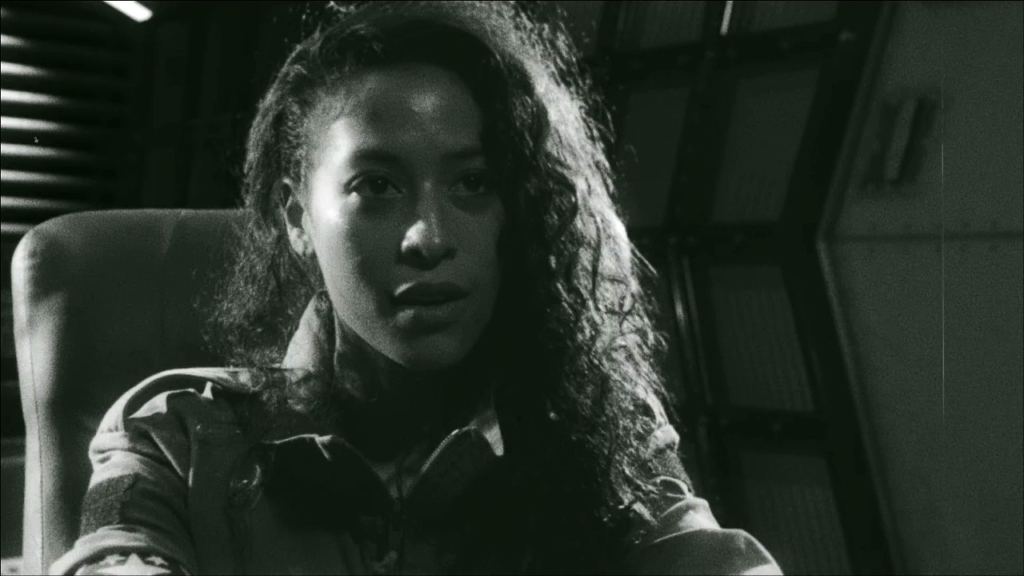
I lack the enthusiasm and the expertise with shoot ’em ups to say much about their design quality. I find these types of videogames repetitive and uninteresting. This may have been my reaction to Squad 51 vs. the Flying Saucers as well, but the audacity and the faithfulness with which it recreates 1950s B-movie aesthetics keeps me captivated and entertained throughout its three hour runtime. With those aspects stripped away, I likely would respond with an indifferent shrug. The deliberately cheesy production values make this experience for me. Everything else, I can do without. Squad 51 vs. the Flying Saucers is a visual and aesthetic treat and I recommend it for those reasons—and only for those reasons.